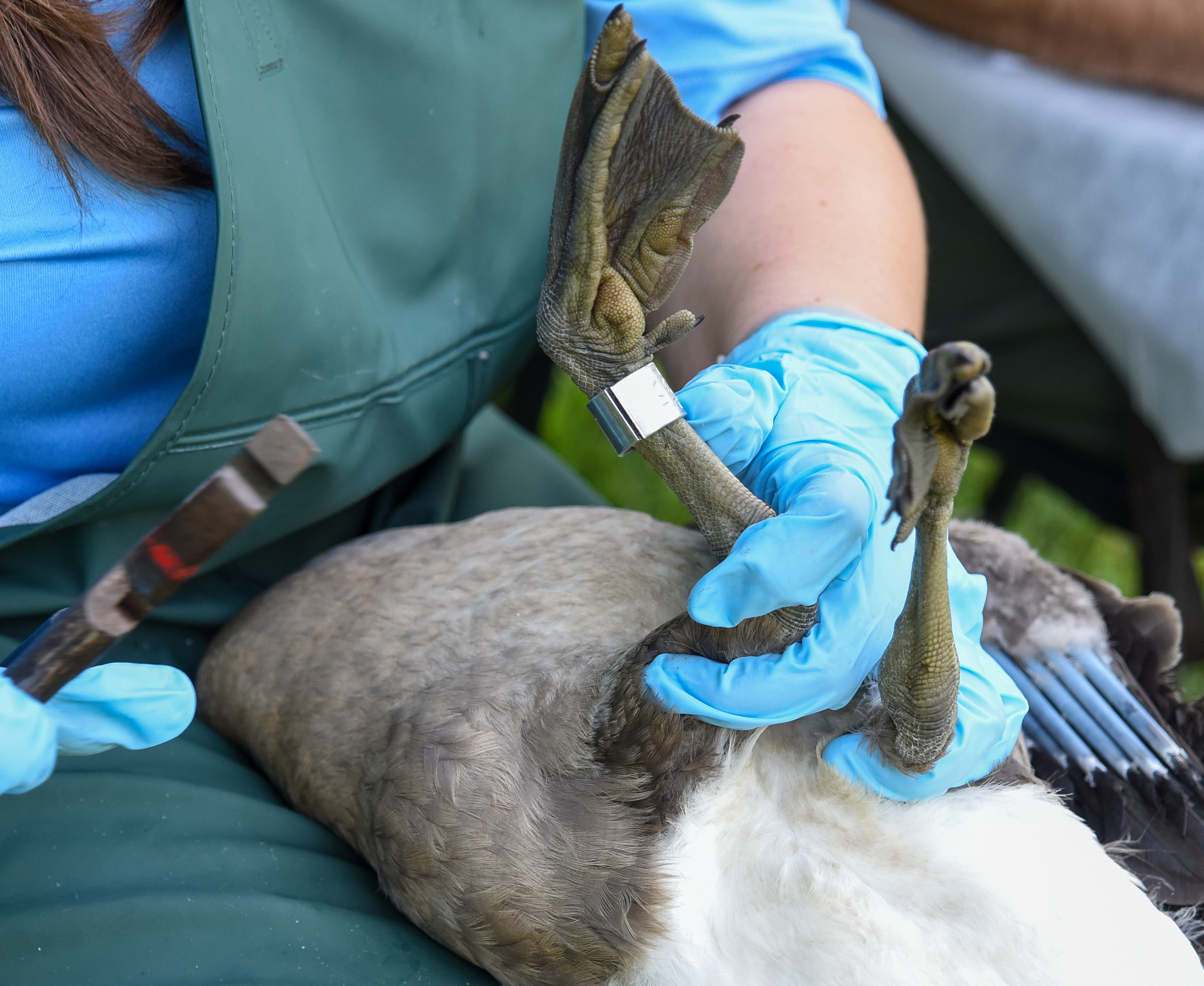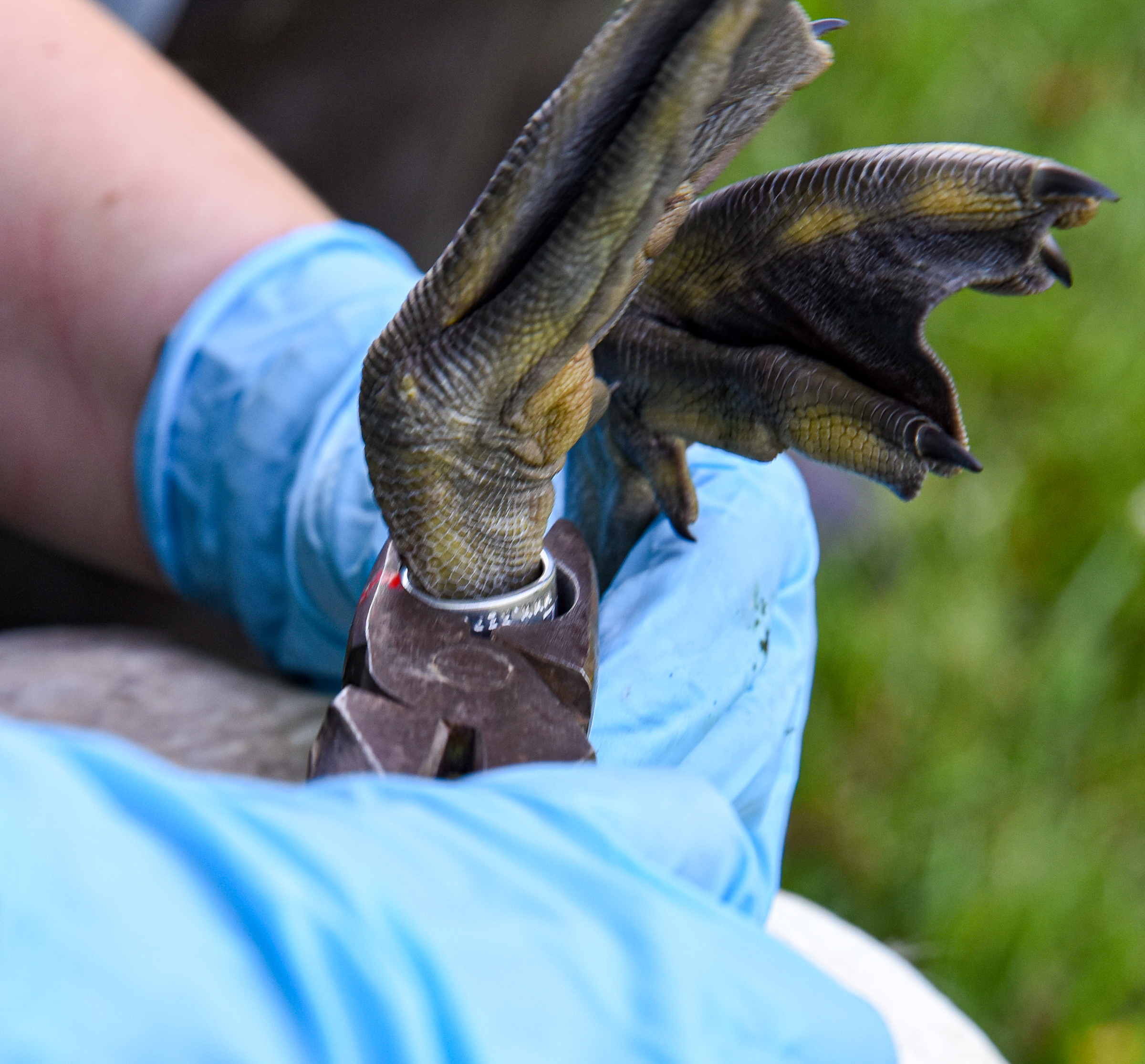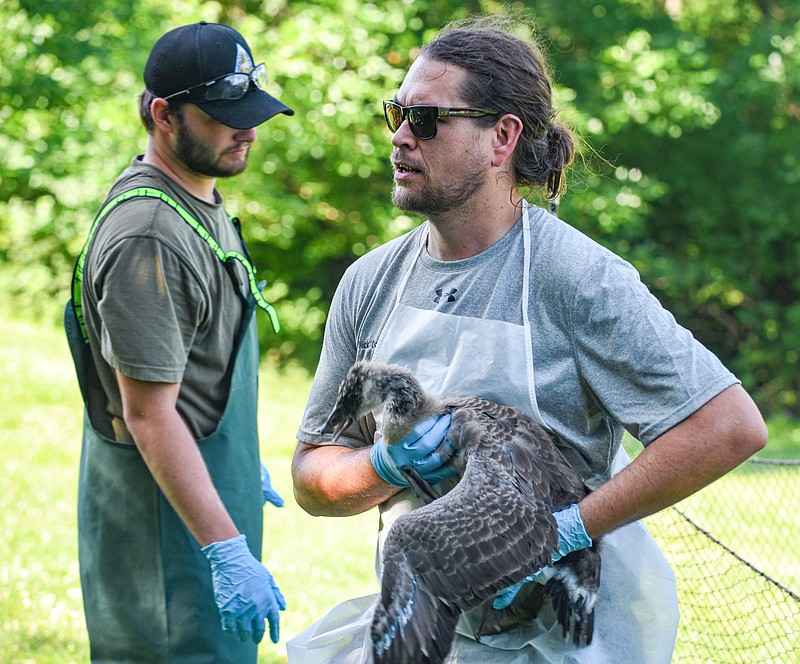The early Conservation agent gets the bird and avoids the heat when a heat advisory is under way.
On Tuesday morning, crews from the Missouri Department of Conservation got an early start in their annual goose roundup at local lakes and ponds.
The roundup is done around this time of the year because the birds are molting so most can't fly and that makes it easier to round them up. And the incentive to start the count early in the day was to avoid the heat that staff in protective gear would experience.
Staff at Binder Lake in Jefferson City on Tuesday were checking to see if the geese had their bands on or needed to be re-banded. The banding helps MDC staff keep track of the bird population and its survival rate, especially after things such as a hunting season. The staff compares the number of bands they see in the roundup and the numbers of bands that hunters report during the hunting season to the number of bands they attached last year.
While banding the birds, the staff also looks at the age of the goose. Many times, they also put down information about how many males and females they find. But this year, the staff had less contact with the birds due to the presence of avian influenza.
Avian influenza is a viral infection that can infect not only birds, but humans and other animals.
MDC spokesperson Lucas Bond said they weren't allowing volunteers to help with the roundup this year due to avian influenza, and the MDC staff wore more protective gear this year during the roundup. The gear is disinfected after they're done at each site to prevent the spread of bird flu, he said.
MDC confirmed finding avian influenza in birds this spring, but there haven't been any new reports in recent weeks. The hope is that with temperatures warming up, the disease will subside, officials said.
 Julie Smith photo: Using banding pliers, Lyndsey Ernat forms a ring around this goose’s leg before releasing it to run back to the water. Ernat is a research assistant in the Columbia Department of Conservation office and was helping with the agency's annual banding project Tuesday at multiple lakes in and around Jefferson City. They are shown here at McKay Park Lake in the mid-morning hours.
Julie Smith photo: Using banding pliers, Lyndsey Ernat forms a ring around this goose’s leg before releasing it to run back to the water. Ernat is a research assistant in the Columbia Department of Conservation office and was helping with the agency's annual banding project Tuesday at multiple lakes in and around Jefferson City. They are shown here at McKay Park Lake in the mid-morning hours.  Julie Smith photo: Using banding pliers, Lyndsey Ernat forms a ring around this goose’s leg before releasing it to run back to the water. Ernat is a research assistant in the Columbia Department of Conservation office. The fowl are not harmed in this process during which a band is attached that contains identification numbers which are recorded in a database in Missouri and forwarded to the federal government for a national registry.
Julie Smith photo: Using banding pliers, Lyndsey Ernat forms a ring around this goose’s leg before releasing it to run back to the water. Ernat is a research assistant in the Columbia Department of Conservation office. The fowl are not harmed in this process during which a band is attached that contains identification numbers which are recorded in a database in Missouri and forwarded to the federal government for a national registry.
